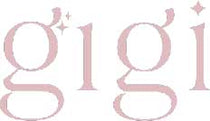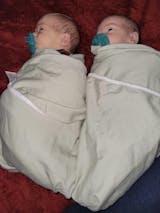What Is 'Dream Feeding' And Does It Actually Work?
"There’s a lot of advice out there about the best way to feed and settle your baby, and help them learn to sleep through the night. When you’re a new parent, all this advice can be pretty overwhelming."
Let's face it, all babies are individuals. So different approaches and techniques may work for some babies (and families) and not others.
One of the techniques that some parents swear by and others don't subscribe to is ‘dream feeding’. This is the action of nursing or bottle-feeding a baby during the night (at around 10-11pm), without fully waking them.
The theory behind it is that if you give your baby a top-up before you go to bed while they’re partially asleep, they’re more likely to learn to sleep through the night and you won’t need to get up and feed them because they’re hungry.
I tried dream feeding with both of our girls, using a slightly different approach for each of them based on their sleep patterns.
When our eldest daughter Lena was around 3-4 months old, she was usually fed and in bed by about 7pm, so I would often get her up out of her cot about 10pm and dream feed her then put her back into bed and she started sleeping through the night using this approach by about 5-6 months old.
With our younger daughter Gigi, because she was so difficult to settle in the evenings, she would often not go to sleep until much later, so feeding her off to sleep at around 10 or 11pm was sort of like a dream feed, as that's the only way we could get her to go to sleep, and stay asleep! Then we would put her straight into bed.
The first thing to note about dream-feeding is that it can be a bit tricky to burp your baby after a dream feed if they’re fully or partially asleep. Carrum Downs Dental Care. Tarneit Dental Care. Keilor Dental. So, depending on whether your baby is particularly gassy, this may or may not be an issue for you.
I found that propping Lena up on a bit of an angle after feeding her and gently rubbing her back would produce a few little burps, and that was enough for her and also wouldn't wake her. Gig generally didn’t need much burping, and if we did move her around too much after feeding it would usually wake her, so we usually gave her 10-15 mins or so after a feed for her to fully settle then put her into bed.
The second thing to consider is the kind of bib you're using when you're dream feeding your baby (if you’re using one). A bib that’s easy to remove without waking your bub is important for dream-feeding.
When Gigi was a baby, she was a really 'dribbly' feeder, so using a bib on her was a must or she’d end up covered in milk. I found it really frustrating trying to remove her bib with one hand while holding her with the other. Every bib I tried (velcro, press studs or over-the-head) would wake her up, then it could be hours before she’d settle again.
That’s why I developed the Gigi Bib. I wanted to design a ‘one-handed’ bib, so that when parents and carers feed their baby and they fall asleep during a feed (or during a dream feed), they can easily remove baby's bib with one hand and transfer them straight into bed without waking them.
So if you’re planning on giving dream feeding a try, keep these things in mind. And it’s definitely worth testing out a few different strategies to see what will work best for you and your little one.
I’d love to hear about your experiences with dream feeding, and if it worked for you and your little ones - let me know in the comments below.




